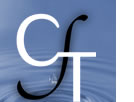 |
||||||||||
For More Information
This article was originally published in the Fall 2002 issue of the CFT's newsletter, Teaching Forum.
by Derek Bruff
As this year's Department of Physics and Astronomy's Forman Lecturer, Eric Mazur presented a talk entitled "Understanding or Memorization: Are We Teaching the Right Thing?" on September 26, 2002. The overheads Professor Mazur used during his talk are available online as is the article upon which his talk was based. For more information about the physics and education research done by Eric Mazur, visit his research group's Web site .
The ConcepTest mentioned in the accompanying article is part of a larger teaching methodology called Peer Instruction. The ConcepTest was initially developed for teaching physics classes, but it has been adopted and adapted by a variety of disciplines. The ConcepTest works as follows.
During class, the instructor presents a multiple-choice question that requires a conceptual understanding of the content being studied. Calculations are rarely required to answer the question.
The students are given a minute or two to think about the question. Then the students are instructed to answer the question, either by raising their hands, holding up cards with their answer choices, or submitting their answers via a wireless Personal Response System (PRS) transmitter. [See this issue's Teaching Exchange for more information about PRS systems at Vanderbilt.]
The instructor immediately sees how many of the students answer the question correctly and can then infer how well the class understands the concepts involved in the question. Often-particularly if a sufficient number of students answer incorrectly--the instructor then tells the students to convince their neighbor of their answer.
The students discuss the questions for a minute or two and then submit their answers again. Typically, the students who answered correctly the first time convince their neighbors to answer correctly, and so more students answer correctly than before the discussion period.
Once again, the instructor immediately sees how well the class is doing. Based on this feedback, the instructor might lecture for a time or move on to a more difficult ConcepTest.
More information about ConcepTests and Peer Instruction can be found at the Project Galileo Web site , a site managed by the Mazur Group with the goal of making innovative teaching materials more widely accessible.
The Just-in-Time Teaching instructional method mentioned by Eric Mazur in the accompanying article has a Web site designed to support it. The JiTT Web site provides a full description of the components of the teaching method as well as sample activities.
HOME | ABOUT CFT | PROGRAMS | SERVICES | RESOURCES
Center for Teaching |
General Questions? Web Site Questions? Copyright ©2009 |
